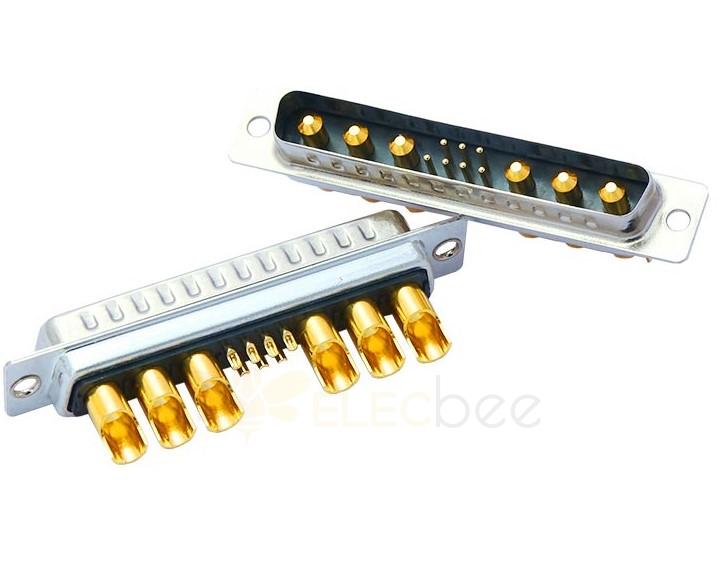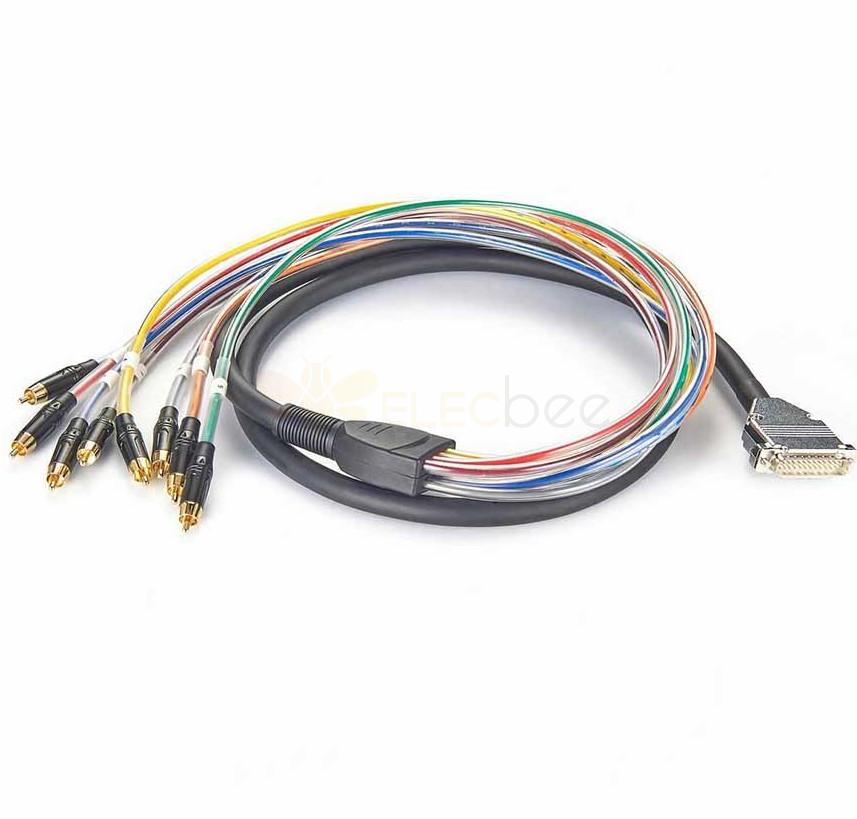D-Sub connectors are commonly used in various applications for their reliability and versatility. These connectors are known for their robustness and ability to handle a wide range of signals and data. One important aspect to consider when working with D-Sub connectors is the appropriate wire size to ensure optimal performance and electrical integrity. In this article, we will explore the various wire sizes that are commonly used with D-Sub connectors and their significance in different applications.

Understanding Wire Gauge
Wire size is measured using a gauge system, which assigns a numerical value to represent the diameter of the wire. The gauge number inversely correlates with the wire diameter - the smaller the gauge number, the larger the wire diameter. For example, a 20-gauge wire is thicker than a 24-gauge wire.
Importance of Wire Size
The wire size used with D-Sub connectors is crucial as it directly impacts the electrical performance of the connection. Using the appropriate wire size ensures that the connection can handle the current and voltage levels without excessive resistance, heat generation, or signal loss. Choosing the correct wire size also ensures that the connector contacts securely grip the wire and establish a reliable electrical connection.

Common Wire Sizes for D-Sub Connectors
1. 26 AWG (American Wire Gauge)
26 AWG wire is commonly used with D-Sub connectors, especially in applications where space is limited or the current requirements are relatively low. This wire size offers flexibility and ease of installation due to its smaller diameter. It is suitable for applications such as computer peripherals, telecommunications, and low-power signal transmission.
2. 24 AWG
24 AWG wire is a popular choice for D-Sub connectors as it strikes a balance between size and current-carrying capacity. It offers better current handling compared to 26 AWG wire while still being flexible enough for most applications. This wire size is commonly used in data communications, industrial control systems, and audio/video applications.
3. 22 AWG
22 AWG wire is thicker and can handle higher currents compared to both 26 AWG and 24 AWG wires. It is commonly used in applications that require heavier power transmission, such as industrial automation, power distribution, and high-current applications. The larger wire diameter may require additional attention to ensure proper termination within the D-Sub connector.
4. 20 AWG
20 AWG wire is even thicker and can handle even higher currents than the previously mentioned sizes. It is typically used in applications that require significant power transmission, such as high-power audio systems, heavy machinery, and industrial equipment. The larger diameter of 20 AWG wire may require careful consideration of the connector's pin and socket size to ensure a proper fit.

Factors Influencing Wire Size Selection
When determining the appropriate wire size for a D-Sub connector, several factors need to be considered:
1. Current Requirements
The amount of current that will flow through the wire is a crucial factor in determining the appropriate wire size. Higher currents require thicker wires to prevent excessive resistance and heat buildup.
2. Voltage Levels
The voltage levels in the application also impact wire size selection. Higher voltages may require thicker insulation to ensure proper insulation resistance and electrical safety.
3. Length of the Wire
The length of the wire between the D-Sub connector and the connected device is another important consideration. Longer wire lengths may require thicker wires to minimize voltage drop and signal loss.
4. Environmental Factors
Environmental factors such as temperature, moisture, and exposure to chemicals or abrasion should also be taken into account. Harsh environments may require wires with additional insulation or protection to ensure long-term reliability.
5. Application Specifics
The specific application requirements, such as signal type, frequency, and electromagnetic interference considerations, may influence the choice of wire size.
Conclusion
Selecting the appropriate wire size is essential for achieving optimal performance and reliability with D-Sub connectors. Whether you choose 26 AWG, 24 AWG, 22 AWG, or 20 AWG wire depends on factors such as current requirements, voltage levels, wire length, environmental conditions, and application specifics. By considering these factors and choosing the right wire size, you can ensure a secure and efficient electrical connection with your D-Sub connectors, enabling smooth signal transmission and reliable operation in your chosen application.






